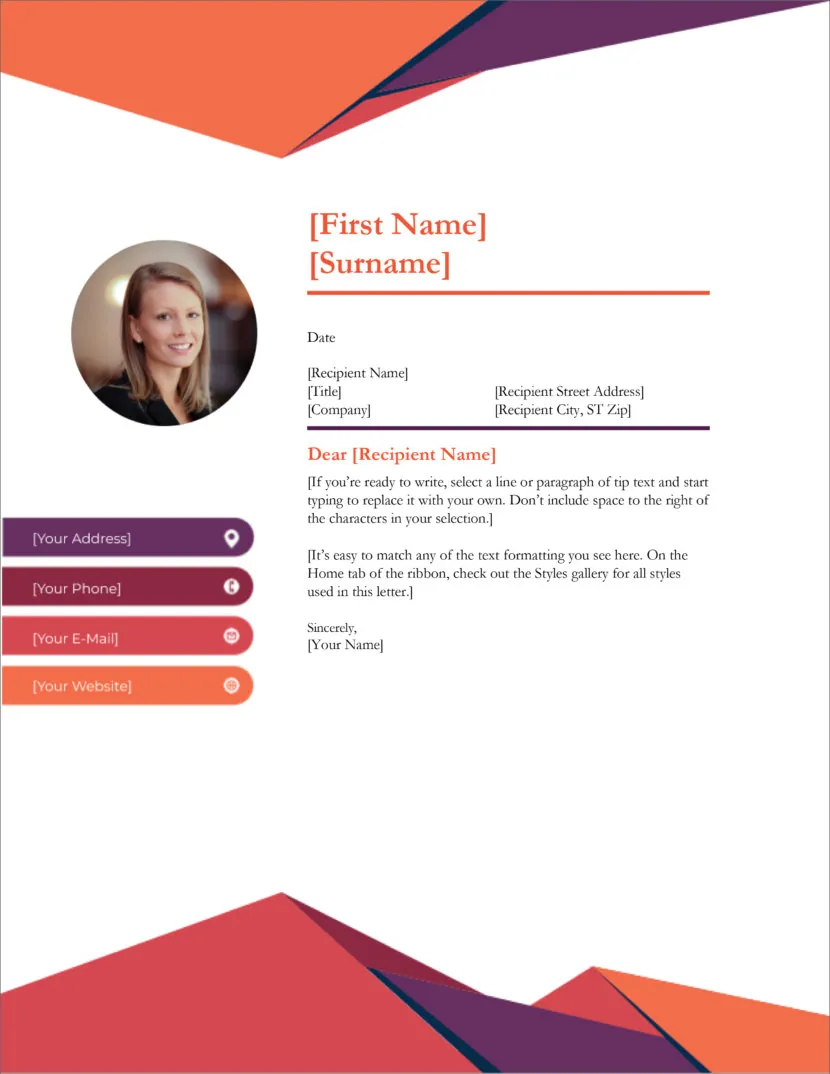Cover Letter Templates Microsoft Word Overview
Crafting a compelling cover letter is a crucial step in the job application process. It’s your first introduction to a potential employer, a chance to showcase your personality, and highlight why you’re the perfect fit for the role. Using Microsoft Word cover letter templates can significantly streamline this process, saving you time and ensuring a polished, professional document. These templates offer a structured framework, allowing you to focus on the content that truly matters your skills, experience, and enthusiasm. This guide delves into the world of Microsoft Word cover letter templates, providing a step-by-step approach to creating a winning cover letter that grabs the attention of hiring managers.
Why Use a Cover Letter Template
Cover letter templates offer numerous advantages, making them an invaluable tool for job seekers. They eliminate the need to start from scratch, providing a pre-designed structure that saves considerable time and effort. Templates ensure your cover letter adheres to professional formatting standards, creating a polished and visually appealing document. They also guide you in including all the essential information, such as contact details, relevant skills, and a compelling narrative that highlights your qualifications. Using a template is a smart approach, especially when you’re applying for multiple positions or when you’re short on time. They are easily customizable. Overall, they give you a head start in a competitive job market.
Benefits of Using Templates
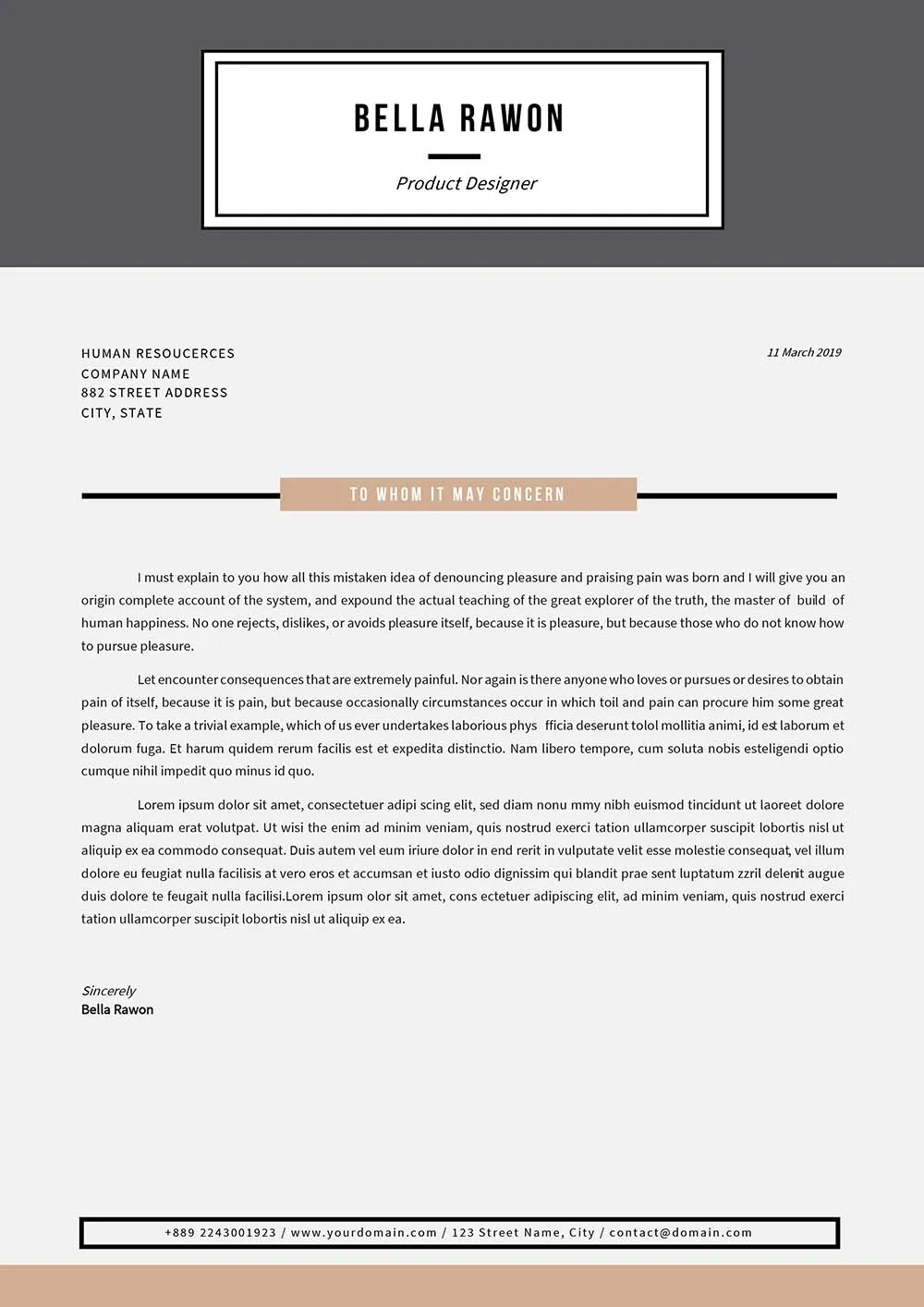
Time Saving
One of the primary benefits of using a cover letter template is the significant time savings. Instead of spending hours formatting and structuring your document, you can quickly adapt a pre-designed template to your specific needs. This is particularly helpful when you’re applying for multiple jobs, as you can easily modify the template for each application. By starting with a template, you can allocate your time to writing compelling content rather than struggling with formatting issues. This efficiency is a major advantage, allowing you to submit your applications faster and focus on other aspects of your job search.
Professional Appearance
Cover letter templates are designed to adhere to professional formatting standards, which results in a visually appealing document. They often incorporate elements like appropriate margins, font styles, and spacing, which can be difficult to achieve from scratch, especially for those unfamiliar with design principles. The professional appearance conveyed by a well-formatted cover letter immediately makes a positive impression on potential employers. This attention to detail suggests that you are organized and take pride in your work, further increasing your chances of getting noticed. Templates provide a polished look and feel, demonstrating your professionalism from the start.
Easy Customization
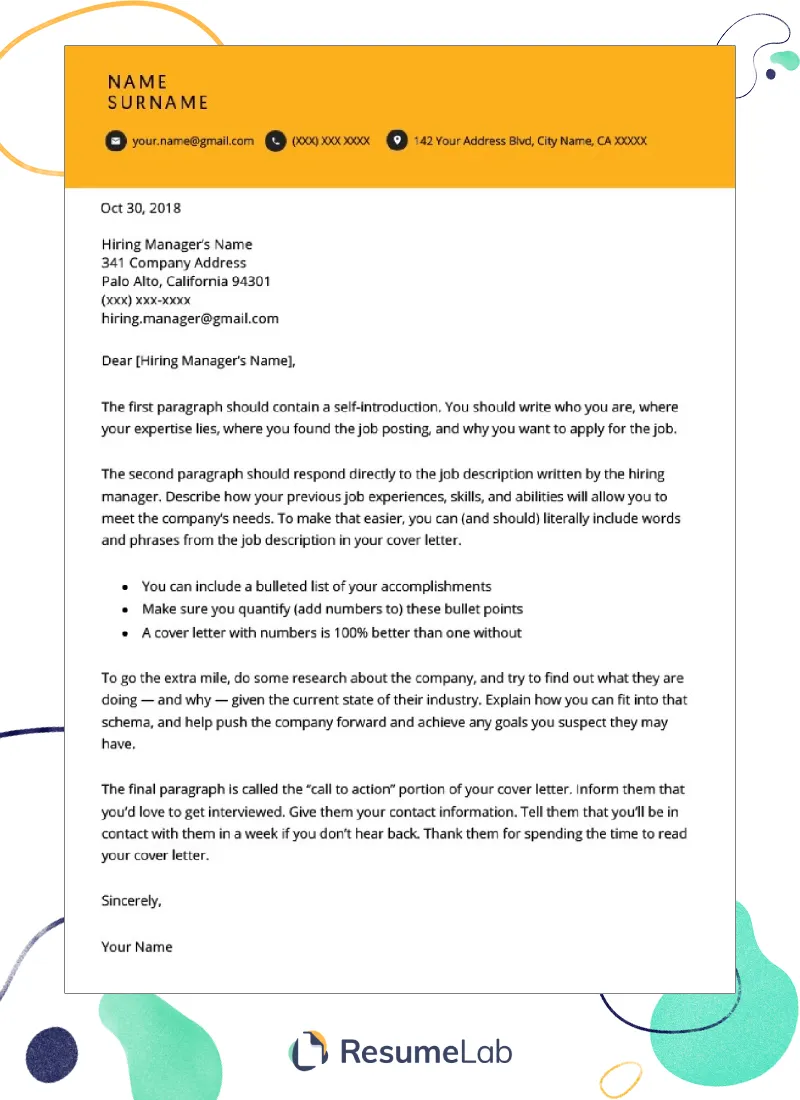
Cover letter templates are designed for easy customization. You can readily adapt them to fit your unique qualifications and the requirements of each job you apply for. Most templates have placeholder text that guides you on what information to include, such as your skills, experience, and achievements. You can easily replace the placeholder text with your own details, ensuring that your cover letter is personalized and relevant to the specific job. Microsoft Word templates are particularly user-friendly, enabling you to change fonts, colors, and layouts to align with your personal style and preferences. This easy customization ensures that your cover letter stands out from the crowd.
Step-by-Step How to Write a Cover Letter in Microsoft Word
Open Microsoft Word
Begin by opening Microsoft Word on your computer. Make sure you have the latest version installed to access the most current templates and features. Once Word is open, you’ll see the home screen, which will display options for creating a new document or opening an existing one. This is the starting point for creating your cover letter. Ensure you are comfortable with the Word interface and the basic functions, such as saving, formatting, and editing. This will greatly streamline the process of using a template.
Select a Cover Letter Template
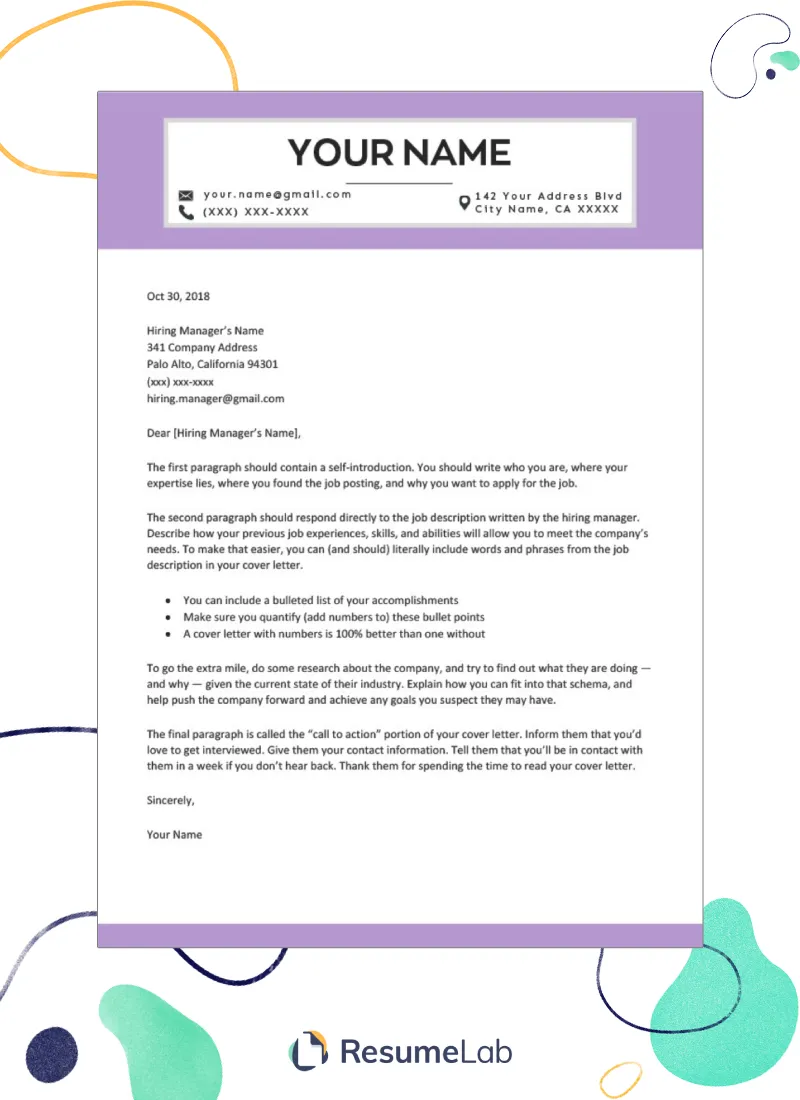
Microsoft Word provides a variety of cover letter templates to choose from. Navigate to the ‘File’ tab and select ‘New’ to access the template library. In the search bar, type ‘cover letter’ to filter the available options. You’ll see a range of pre-designed templates, each offering a different style and layout. Browse through the options and select a template that best suits your personal brand and the job you’re applying for. Consider the overall design, the placement of information, and the level of formality to find the ideal template for your needs.
Choose a Template
Once you’ve searched for cover letter templates, take the time to preview each one. Consider the layout, font, and overall design. Some templates are more formal, while others are more contemporary. Choose a template that aligns with the industry you’re applying to and your personal style. Remember, the goal is to create a professional-looking cover letter that showcases your personality and qualifications. Select a template that provides ample space for your content and allows you to highlight your skills and experience effectively. If you prefer a minimalist design, choose a clean and simple template; if you want something with a bit more flair, opt for a template with creative elements.
Search Online Templates
If the templates within Microsoft Word do not meet your needs, you can search for templates online. Many websites offer free and premium cover letter templates in Microsoft Word format. Search for ‘free Microsoft Word cover letter templates’ to find a vast selection of options. When choosing a template from an external website, make sure it’s compatible with your version of Word and that the design is professional and appropriate for your job application. Once you find a template you like, download it and open it in Word. This provides you with even more choices and customization options.
Customize the Template
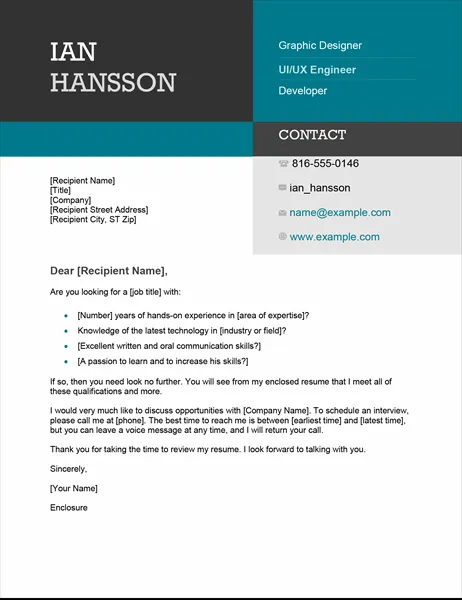
After selecting your cover letter template, the next step is to customize it with your personal information and the details relevant to the job you’re applying for. This process involves replacing the placeholder text with your own information and tailoring the content to highlight your skills and experience. Take your time to ensure all the details are accurate and that the tone and style of your cover letter are appropriate for the position. This customization is crucial in creating a cover letter that resonates with the hiring manager and demonstrates your enthusiasm for the role.
Personalize the Header
Start by personalizing the header of your cover letter. This section typically includes your contact information, such as your name, address, phone number, and email address. Ensure that your contact information is up-to-date and professional. Next, include the date and the recipient’s information, including the hiring manager’s name, title, and company address. If you don’t know the hiring manager’s name, try to find it on the company website or LinkedIn. Addressing the letter to a specific person shows that you have done your research and adds a personal touch.
Edit the Body Text
The body text is where you’ll elaborate on your qualifications and express your interest in the role. Start with a strong opening paragraph that captures the reader’s attention and states the position you are applying for. In the following paragraphs, highlight your relevant skills, experience, and achievements, providing specific examples to support your claims. Tailor the content to match the job description, emphasizing the skills and experiences that are most relevant. Finally, conclude with a strong closing paragraph that reiterates your interest and includes a call to action, such as requesting an interview. Proofread your cover letter carefully to ensure the language is clear and error-free.
Formatting Tips
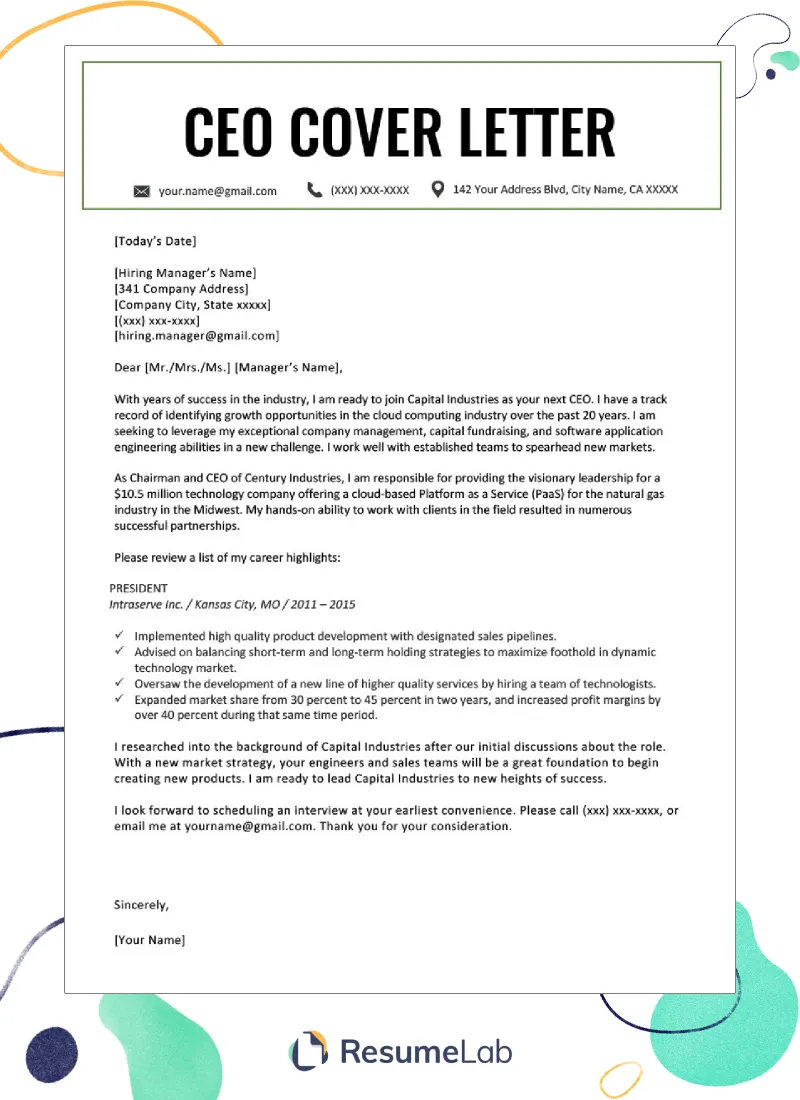
Pay attention to formatting to create a visually appealing document. Use a professional font like Times New Roman, Arial, or Calibri, and set the font size to 11 or 12 points. Maintain consistent spacing and margins throughout the letter. Use bullet points to highlight your key achievements and skills, making them easy to scan. Ensure there are clear headings and subheadings to organize your content. Avoid using excessive colors or graphics that might distract from the content. By following these formatting tips, you can create a cover letter that is both easy to read and visually appealing, making a positive impression on the hiring manager.
Proofread Your Cover Letter
Proofreading is a critical step that should never be skipped. Carefully review your cover letter for any grammatical errors, typos, or inconsistencies. Read the document aloud to catch awkward phrasing or sentence structures. Ask a friend or family member to review your cover letter. Another set of eyes can often identify errors that you might have missed. Make sure all the details, like dates, names, and job titles, are accurate. A well-proofread cover letter demonstrates your attention to detail and professionalism and increases your chances of making a positive impression.
Key Components of a Winning Cover Letter
A winning cover letter should include several key components to effectively communicate your qualifications and interest in the role. It should clearly state the position you’re applying for and highlight your relevant skills and experiences. The letter should also demonstrate your understanding of the company and the specific requirements of the job. By including these elements, you can create a cover letter that captures the hiring manager’s attention and makes a strong case for your candidacy. It’s also important to tailor your cover letter to the specific job description.
Contact Information
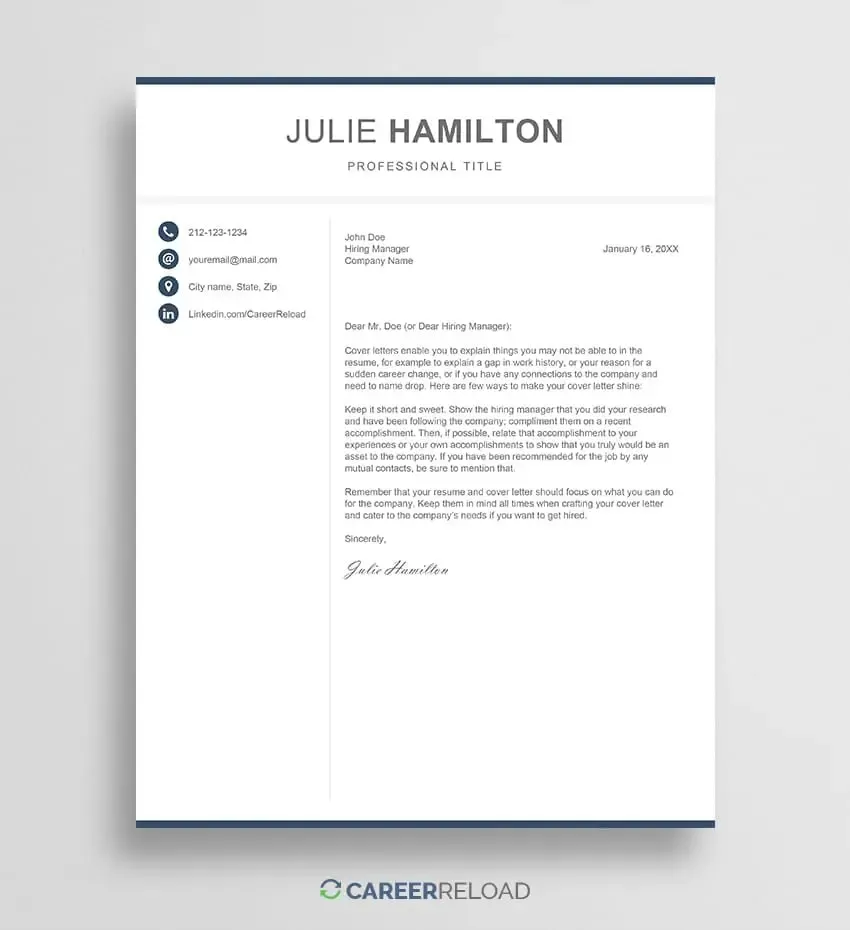
Your contact information is essential for the hiring manager to reach you. This section should be clearly visible at the top of your cover letter. Include your full name, address, phone number, and email address. Ensure your email address is professional. Double-check that the information is accurate and up-to-date. This basic yet essential information enables the hiring manager to contact you quickly and easily, should they decide to move forward with your application. Providing accurate contact information ensures your application is complete and ready for the next stage.
Your Name and Address
Begin with your full name at the top of your cover letter. Follow this with your complete address, including street address, city, state, and zip code. The address provides a way for the company to send any physical mail. Using a clear and easily readable font will ensure that your name and address are easily visible. These details are essential for the hiring manager to identify your application and easily reach you if needed. This information also adds a professional touch to your application.
Date
Include the date you are submitting the cover letter. Place the date just below your contact information, typically aligned to the left or right. Use a standard date format (e.g., Month Day, Year). The date provides a reference point and indicates when the application was submitted. It is a crucial component in a cover letter. This helps the recipient know when the application was received. This helps to maintain a professional appearance.
Recipient’s Information
The recipient’s information is placed just below the date. This includes the hiring manager’s name, title, company name, and address. Research and find the hiring manager’s name whenever possible, as this shows that you have taken the time to personalize your application. If you cannot find the hiring manager’s name, use a general salutation such as ‘Dear Hiring Manager.’ Including the recipient’s information demonstrates your attention to detail and professionalism, making a positive impression on the hiring manager.
Hiring Manager’s Name and Title
If possible, address your cover letter to the hiring manager by name. Research the company’s website or LinkedIn to find the hiring manager’s name and title. Use a formal salutation, such as ‘Dear Mr./Ms./Mx. [Last Name].’ Addressing the cover letter to a specific person personalizes your application and shows that you have done your research. This adds a personal touch to your application. If you are unable to find the hiring manager’s name, use a general salutation, like ‘Dear Hiring Manager’.
Company Name and Address
Include the company’s name and address below the hiring manager’s name and title. Make sure the company name is accurate and spelled correctly. Include the full address, including street address, city, state, and zip code. This information is essential for identifying the company and ensuring your cover letter is properly addressed. Accurate company information will present you as a detail-oriented candidate. This demonstrates that you have researched the company and are serious about the position.
The Cover Letter Body
The body of your cover letter is where you will articulate your qualifications and express your interest in the role. This section should be carefully structured to make a strong impression. The body typically consists of an opening paragraph, middle paragraphs that highlight your skills and experience, and a closing paragraph that reiterates your interest and includes a call to action. Each paragraph should be well-written, concise, and tailored to the specific job requirements. This is your opportunity to showcase your personality and demonstrate why you’re a good fit for the role.
Opening Paragraph
The opening paragraph should immediately capture the reader’s attention and clearly state the position you are applying for. Briefly mention how you found out about the job, whether through a job board, a referral, or the company’s website. State your enthusiasm for the role and the company. The opening paragraph sets the tone for the rest of your cover letter, so it must be engaging and compelling. Make sure it quickly grabs the attention of the hiring manager, and makes them want to read further.
Middle Paragraphs Highlight Skills
The middle paragraphs should highlight your relevant skills, experience, and accomplishments. Provide specific examples to demonstrate how you have used your skills to achieve results in previous roles. Tailor the content to match the job description, focusing on the key requirements and responsibilities. Use action verbs to describe your accomplishments. Keep the paragraphs concise and focused. Make sure you show the employer what you can do for them. Use quantifiable data to showcase your achievements. Relate your qualifications to the job requirements, showing the hiring manager your potential fit for the position.
Closing Paragraph
The closing paragraph should reiterate your interest in the role and summarize your key qualifications. Thank the hiring manager for their time and consideration. Include a call to action, such as requesting an interview or stating your willingness to discuss your qualifications further. Be polite and professional. Express your enthusiasm for the opportunity. Make sure the closing paragraph leaves the reader with a positive impression and encourages them to take the next step. Always proofread your cover letter before submitting it to ensure that the writing is professional.
Saving and Submitting Your Cover Letter
Once you have created and finalized your cover letter, you must save it properly and submit it with your job application. Follow these guidelines to ensure your cover letter is saved in the appropriate format and submitted successfully. Make sure to save your cover letter in a professional format. Ensure that you carefully follow the application instructions for submitting the cover letter. This will help your application stand out and increase your chances of getting noticed.
Save Your Cover Letter
After you’ve completed writing and proofreading your cover letter, you need to save it. Choose a clear and descriptive file name that includes your name and the job title. For example, ‘Jane Doe_Cover Letter_Marketing Manager.’ This helps the hiring manager quickly identify your cover letter. Regularly save your work as you write to avoid losing any progress. This is extremely important. You can save your cover letter in the Microsoft Word format (.docx) to retain the formatting. You can also choose to save it as a PDF to maintain the formatting and make it accessible on any device.
Choosing the Right File Format
Select the appropriate file format for your cover letter. The two most common options are .docx and PDF. The .docx format allows you to edit the document, making it useful if you need to make further changes. However, this format may change the layout depending on the recipient’s version of Microsoft Word. The PDF format is the preferred choice. This format preserves the formatting, ensuring that your cover letter looks the same on any device. A PDF is a standard format. When submitting your cover letter, check the job application instructions to determine the preferred file format.
Submitting Your Cover Letter
Follow the application instructions carefully when submitting your cover letter. The instructions may specify how to submit your cover letter, such as via email, an online application portal, or a company website. Ensure that you follow the specified format and include all the required documents. If submitting via email, include a concise and professional subject line. Attach your cover letter and resume. Always double-check that you have included all the necessary documents and that they are the correct versions. Following these steps ensures a smooth submission and helps your application stand out.
Follow Application Instructions
Carefully review the application instructions before submitting your cover letter. These instructions will often specify the format for the cover letter, the file type, and the method of submission. Failing to follow these instructions could result in your application being rejected. Make sure you know the proper way to submit your document and follow the instructions meticulously. If the application has a specific online portal, ensure you correctly upload your cover letter and resume. Pay attention to any specific requirements to avoid mistakes.
